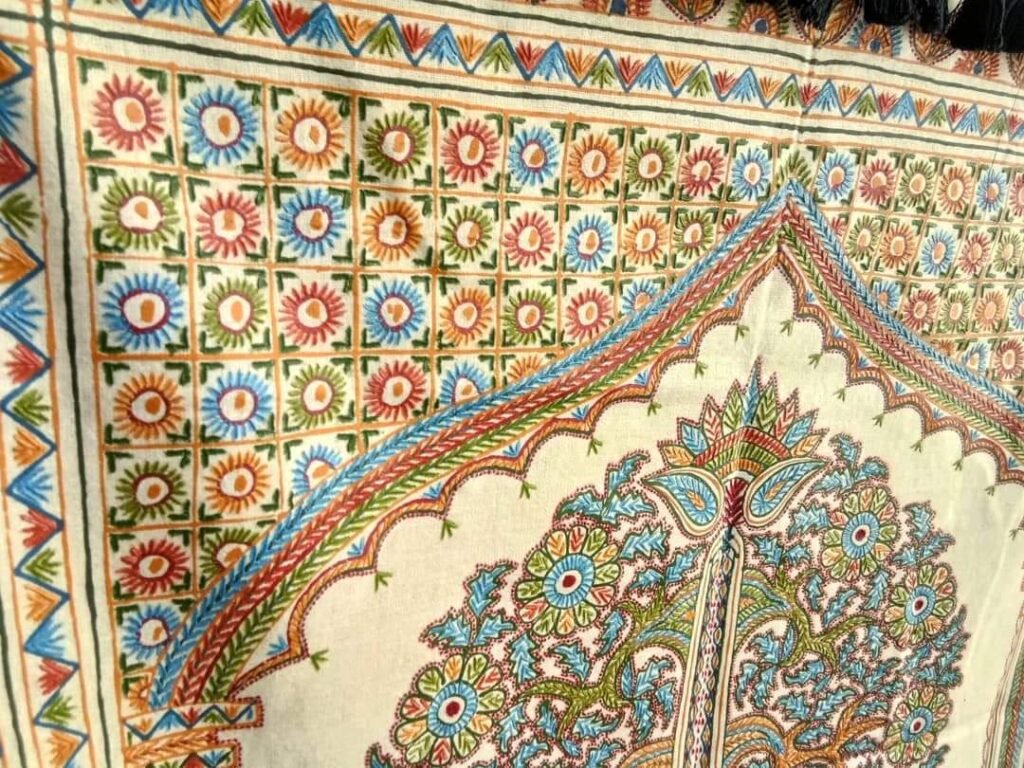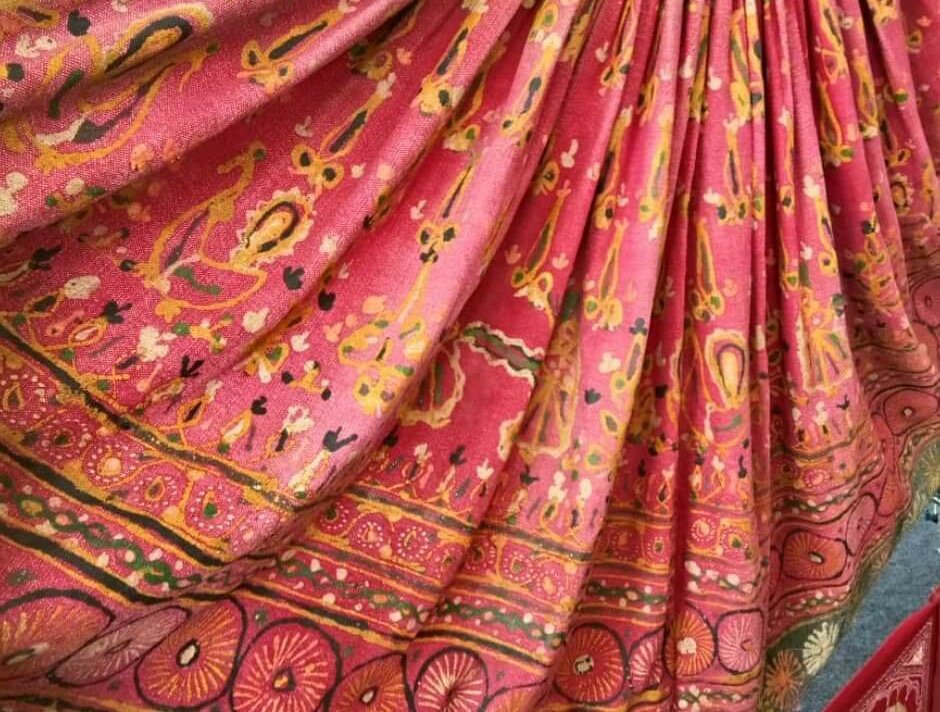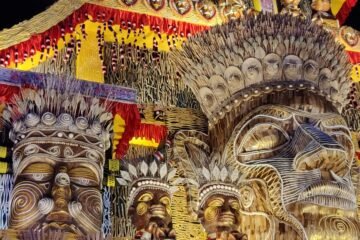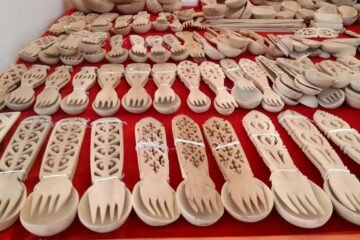Rogan Art is a unique artform which travelled to India all the way from Persia almost 400 years ago. And then, with the advent of modern times and consumerism, almost went extinct. Indeed, even now it is practiced by only a handful of artisans and has hence been declared as an endangered artform by the Government of India.
Out of all the artforms I have seen being made, Rogan painting is by far the most amazing as well as mesmerising. It is painting on cloth with a thin brush or needle, but unlike any other form of painting, the needle does not touch the cloth. How is that possible? Well, take a look below:
The Secret of Rogan Art
Just like every delicious recipe has a secret ingredient, the mysterious element in Rogan art is its paint.
The process of Rogan painting starts with the production of its special paint produced from the local castor seeds, whose oil is boiled for over 12 hours with continuous stirring. This process of boiling the oil requires a lot of effort and is done especially in the forest. This is because the fumes emitted by the boiled oil are very strong and need an open atmosphere to disseminate in. For this reason, traditionally it is also mostly the males of the household which participate in this process. The residue of this oil, called rogan (meaning oil-based), is then cooled down and mixed with pigments. This ultimately yields a thick paint of vibrant colors which has the unique consistency to enable the artisan to maneuver it on the cloth from a distance. The consistency of the paint, as you can guess, is instrumental. If it is too thick, and it will not have the required malleability, and if it is too thin, it will not have adequate strength to maintain its consistent string-like quality.
The exact method of production and components of the paint have been kept a secret by the artisans of the Rogan since four centuries, and now lie within the confines of the few households still practicing the artform.

The Process of Rogan Painting
Once the paint is ready, the artisan takes this paint in their palm, and mixes it with a blunt needle called the kalam. When it reaches room temperature, they wave it magically 1-2 inches over a canvas or cloth to create mind-boggingly intricate motifs.
Interestingly, Rogan paintings are mirror paintings. Once one side of the artwork is complete, the artisan folds the cloth along a central line to print its mirror image on the other side.
While it may look simple and fun to some, doing this work takes years of practice. The artisan not only needs great dexterity and precision to form such perfect and intricate motifs, but also needs to do simultaneous quick maneuvering of the cloth. This is perhaps one of the rarest types of paintings where the canvas moves as much as the kalam (paintbrush or needle) during the process of painting.
The traditional Rogan art is a beautiful array of bright oil colors. It is mostly made on dark colors so as to contrast against the dark canvas of cloth. The designs are often derived from familiar components of Persian and Kutch folktales, including the Tree of Life, geometric flowers and peacocks.

The History of Rogan Art
Long, long back, it was the animal herder and farming communities near the village of Kutch which practiced the artform. The patterns of the traditional Rogan art were rustic and so was the thick, khaddar-type cloth on which it was made. Nevertheless, the brightly colored long skirts of the Ghaghra-Choli, bedsheets and wedding trousseau with contrasting rogan motifs were a prized possession for the women of the community.

The Downfall
Things started changing with the advent of mechanisation and cheaper, machine-made textiles. The more comfortable machine-made cloth became accessible to all, and the cheaper prints posed a big competition to the more expensive and time-taking process of traditional Rogan Art. Soon, the long-drawn process of Rogan painting seemed to be no longer viable for most of these artisans. Once immensely popular, this 400 year old artform was on the verge of extinction during 1980s. Ultimately it fell upon one family, the Khatri family from Nirona village, Kutch, to preserve and perpetuate this artform. A very special person and a brilliant Rogan artist from the Khatri family stuck by their values and brought about a revival of Rogan painting.
Find out the inspiring life story of this visionary Rogan artist in this article on the Rogan Painting Renaissance.


